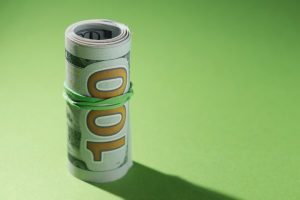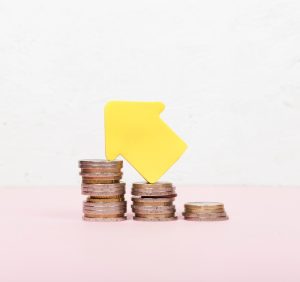STERLING DIPS AS DOLLAR STRENGTHENS WHILE TRADERS AWAIT U.S. DATA
The pound dipped on Wednesday as the dollar strengthened while investors waited for the release of the Federal Reserve’s preferred gauge of inflation on Friday. Sterling was last 0.2% lower at $1.2661, around where it has traded for the last two weeks. The euro was down 0.1% against the pound at 84.37 pence after falling to a two-year low of 84.40 pence on June 14 after French President Emmanuel Macron’s decision to call a snap parliamentary election rocked Europe’s markets. U.S. personal consumption expenditure inflation data, due on Friday, will guide Fed policy and could lead to swings in currency markets. The pound has been one of the best performers this year, down just 0.4% against the dollar, compared with a 3% fall for the euro and 13% drop for the yen. Britain’s relatively high services and wage inflation means traders expect the Bank of England to cut rates just once or twice this year. That has kept upward pressure on bond yields, making them attractive to many investors and thereby supporting the pound. Expectations that the Labour party will win a huge majority in the July 4 general election and bring some long-absent stability to British policymaking has also been supporting sterling. Yet economists and investors say there are risks to British financial markets from a Labour party that has been coy about its exact plans for taxing and spending. “With fiscal responsibility, everything that Labour is doing is the polar opposite to the (Liz) Truss fiasco,” said Joe Tuckey, head of FX analysis at broker Argentex. “That’s definitely on balance a sterling-friendly dynamic.” Yet Tuckey said the true determinant of the pound over the rest of the year would be Bank of England interest rate policy. “If you’re talking about sterling in the medium term, between now and year-end, this election is not the main driver,” he said. “We’ll be back to looking at whether the Bank of England cuts in August.”

DOLLAR HITS 38-YEAR HIGH VS YEN; US STOCKS RISE
The U.S. dollar on Wednesday hit its highest level against the Japanese yen in nearly 38 years, and investor speculation was high that authorities in Japan could intervene to strengthen the country’s currency, while major U.S. stock indexes climbed. Japan’s top currency diplomat, Masato Kanda, said authorities were “seriously concerned and on high alert” about the yen’s rapid decline. The U.S. dollar hit its strongest level since December 1986 against the yen, and it was last up 0.7% at 160.697 yen . The euro also surged against the yen, rising to 171.79, its highest level since September 1992. It was last up 0.3% at 171.625. “The market seems to be front-running itself with respect to BOJ (Bank of Japan) policy,” said Eugene Epstein, head of structuring for North America at Moneycorp in New Jersey. The yen has been hammered as investors flocked to dollar-based assets to take advantage of U.S. interest rates which are 5.25% to 5.5%. That is much higher than Japanese rates, which have been raised this year to a range of zero to 0.1%. The dollar index , which measures the greenback against a basket of currencies, gained 0.38% to 106.07, with the euro down 0.34% at $1.0677. On Wall Street, shares of artificial intelligence chip leader Nvidia (NVDA.O), opens new tab ended up 0.2%, and shares of Amazon Inc (AMZN.O), opens new tab jumped 3.9%. The S&P 500 consumer discretionary index (.SPLRCD), opens new tab gained 2% on the day. The Dow Jones Industrial Average (.DJI), opens new tab rose 15.64 points, or 0.04%, to 39,127.80, the S&P 500 (.SPX), opens new tab gained 8.60 points, or 0.16%, to 5,477.90 and the Nasdaq Composite (.IXIC), opens new tab gained 87.50 points, or 0.49%, to 17,805.16.

STERLING HEADS FOR FIRST WEEKLY GAIN IN A MONTH
The pound edged up on Thursday, heading for its first weekly gain in a month, as the dollar eased ahead of U.S. inflation data that could prompt the Federal Reserve to cut interest rates more than markets currently anticipate. Sterling was up 0.2% at $1.265, set for a weekly rise of 0.1%, its first weekly increase since the end of May. The euro was flat at 84.60 pence. Friday’s report on the core U.S. personal consumptions expenditure index (PCE), which excludes food and energy prices, is expected to show it has moderated to a rate of 2.6% in May, from 2.8% in April. This is the Fed’s preferred measure of consumer inflation and could influence traders’ thinking on where U.S. rates could go this year. Futures markets show investors are sure the Fed will cut rates at least once this year, with roughly a 50/50 chance of a second cut, largely in line with expectations for the Bank of England. , More immediately, however, the focus for markets and for sterling in particular, are the upcoming elections in France and Britain. Opinion polls right now show the UK is likely to see a Labour government for the first time in 14 years, while in France, there is a strong chance that the far right take a majority of the votes, bringing with it the risk of higher spending that could further undermine France’s already fragile finances. “Political risk in Europe is clearly having a bigger impact on the performance of the euro than the pound,” MUFG strategists said. Market participants remain comfortable with the prospect of a big Labour majority which could bring more stability to UK politics and open up the potential for relations between the EU and UK to improve in the coming years,” they said. A surprise outcome, such as a poorer showing by Labour or no decisive majority by any party could put pressure on the pound, MUFG said.
STERLING ON TRACK FOR MONTHLY RISE VERSUS EURO BEFORE UK VOTE
Sterling was on track for its biggest monthly rise versus the euro since January as political concerns weigh on the single currency ahead of general elections in the UK and France. The pound edged higher on Friday after revised data showed Britain’s economy pulled out of recession at a faster pace than previously thought in the first three months of this year. It was up 0.06% versus a flat dollar at $1.2646. It was up 0.05% against the single currency at 84.72 pence per euro and set for a monthly rise of 0.6%. Investors believe that the expected significant Labour majority after the vote of July 4 would bring more stability to UK politics and open up the potential for relations with the European Union to improve in the coming years. Meanwhile, the most likely outcomes in France, which involves a victory of the far-right party National Rally (RN) or the far-left New Popular Front (NPF), could threaten the safe-haven status of the national debt, weakening the euro. An opinion poll showed on Friday that RN might win as much as 37% of the popular vote, the NPF leftwing alliance was seen reaching 28% of the vote, while President Emanuel Macron’s centrist bloc was seen reaching 20%. “We think there are clear reasons why markets should retain a short EUR/GBP bias – relative political stability around elections; strong and improving macro performance in the UK and a higher terminal rate versus euro,” said Kamal Sharma, forex strategist at BofA. Analysts argued a surprise outcome, such as a poorer showing by Labour or no decisive majority by any party, could put pressure on the pound. Investors await later in the session the report on the core U.S. personal consumption expenditure index (PCE), the Federal Reserve’s favourite inflation gauge, which could affect expectations for the U.S. central bank’s monetary easing cycle. Markets priced in a bit more than a 50% chance of a first 25 bps rate cut by the Bank of England and 42 bps of cumulative monetary easing by year-end versus 45 bps in the US

- CAPITALDIGEST MARKET REVIEW , 03/11/2025November 3, 2025
- CAPITALDIGEST DAILY NEWS, 03/11/2025November 3, 2025
- CAPITALDIGEST MARKET REVIEW, 22/09/2025September 22, 2025
Enter your email address for receiving valuable newsletters.
- CAPITALDIGEST DAILY NEWS, 03/11/2025NNPCL WEIGHS OVERHAUL, REPURPOSING OPTIONS FOR REFINERIES The Nigerian National Petroleum Company Limited has said...November 3, 2025
- CAPITALDIGEST MARKET REVIEW, 22/09/2025STERLING RISES AGAINST DOLLAR ON FED-BOE POLICY DIVERGENCE Sterling gained against the dollar on Tuesday,...September 22, 2025
- CAPITALDIGEST DAILY NEWS, 22/09/2025OIL REFORMS DRIVE $18.2BN DEALS – FG Nigeria’s oil and gas sector is experiencing a...September 22, 2025












